The most fundamental thing in life that we are taught is right under our nose…To stay active.

But there is one thing besides this that rarely ever goes noticed.
Being RE-ACTIVE. There is not enough emphasis on the fact that you need to act on your set backs. You’re always being told that you should be active. Well likely you are, but ask yourself this:
“Am I doing it right?”
What I mean by that is too many times, we find ourselves in a hole. Our bodies change in response to what we eat, what our pain is, and for many of the health reasons that do not simply allow you to.
When you find that moment, the moment to say “I will not fall a victim” to my troubles and inactivity, is the day you work each and every day and time for a tangible and long fulfilling goal.
Many people don’t realize the amount of burden they are placing on their mental health, body, and pain by not taking action and re-action, and in this article I want to talk about these 4 made-ready, get it while its hot concepts:
- The cause of not exercising on your Lower Back and health
- Can exercising be right at this time for you?
- Pick the right exercises you need
- You made the right call to action, by re-action
And what If I showed you how you can relieve and eventually stop your sciatica nerve pain with just a tennis ball?
Wouldn’t that be an amazing thing?!
I will be going over these concepts, giving you the exercises for lower back pain and sciatica, and In my efforts to you, I want to help get you back to your feet so you can live more in harmony.
“Cause” You Didn’t Exercise Your Pain Away – Stay Active and Reactive
Exercising revels many satisfactions, but it Unfortunately can’t be said the same for choosing not to exercise.
What’s the most important element or elements to better health? Are they any of these:
A) Activity
B) The foods you eat
C) Exercise
D) Mental wellness
D) All the Above
Here’s a hint: It’s not one individually.
Like a gear has other gears to power it, health is a self-reflection of it.
See, the majority of us believe that you can get through one element without the other. You have to look at your lower back pain as an integration of all.
When you cancel one to add two, you lose great value in treating your pain. This is what I call the triangle of health. As represented:

What does this have to do with your lower back pain? Aha! Good thought. You need to TRY to promote good health in all areas to relieve you of causing:
- further stress
- muscle tension to the pain in your back.
…Most people that suffer from both specific and nonspecific chronic lower back pain for example; believe the best action is to rest. And if you didn’t know already, you actually lose more than you gain by taking this action. Before you know it your muscles are asking for your help to rebuild them, and your tissues are crying out to get rid of the inflammation. You can risk a couple of things by not exercising when in pain:
- Stiffness
- Weakness
- Muscle strength
- Loss of conditioning
- Stability lost
- Loss of alignment
- Improper posture
- Anxiety
- Depression
- Abdominal pressure on your spine
A close look at what’s happening to your spine:
Let’s talk about nutrition to your spinal disc. The nutrients your body absorbs from the daily foods you eat circulate in and around your spinal disc. When you have alack of exercise, the disc can no longer omit the nutrients to flow through. This leads to a quicker degeneration of your:
- overall spine
- posture
- and an increase in your pain.

These are many of the reasons why you are having trouble with:
- Disc degeneration
- Herniated disc
- Osteoarthritis
- rheumatoid arthritis
- Spinal stenosis
- spondolythesis
- curvature
- bulging disc
- thinning disc
Did you think that was all? Your back will continue to swell. Further swelling will cause your nerves to become more irritated, and if you already have a disc herniation to begin with, it will cause a higher amplitude in pain.
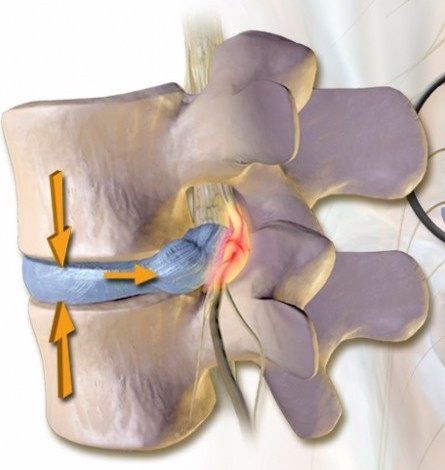
What can follow is weight gain. Gaining extra weight in your mid section puts extra weight on your abdomen, causes your pelvis to lean forward, and puts further stress on your lower back.
Results of non-exercise prove the following:
1. Lie around. This is the rule of all rules. I know that the back pain you have is knocking at your door day to day wanting to come in and crash on your couch, seat, or bed.
Topic/Idea 2
Exercising Is MOST Definitely For You, Still Question it?
There is a lot of discussion on whether you will have the capability to exercise. Simply put, YES.
- At any level of pain
- At any Age
- And at any athletic level
You can integrate a workout for your lower back pain with precision. If that is true, why do so many of you NOT go through with it in the beginning?
Fear is the #1 reasons that will drive you away from exercise. Your amygdala -the fear receptor in the brain- , will alter your perceptive to the pain you feel, and drives you away.

There’s a couple questions you can not only begin to ask yourself right now but you can offer a re-action from them without checking in with your doctor right away.
To find out you should ask yourself these “Am I” questions:
[frontend-checklist name=”Next action steps”]
If you had an answer for 1, 2, 3, or even all 4 of these questions, give yourself a pat on the back because you’re in better shape than you might have thought. This self assessment ensures:
You can begin to slowly work your way into exercising again!
Great news, but what do you have to actually implement so you get better?
Most acute back pain gets better within a few weeks, and Its proven to me that exercise therapy does little to no effect on reducing my inflammation. You should immediately start with the following instead:
- take a pain reliever. Ibuprofen, Naproxen.
- use ice and heat
- continue with your daily activities at a lower impact
As a previous and occurring acute lower back pain patient, (and man do I constantly struggle with) I found that most acute back pain related injuries were non-specific, meaning you didn’t need regular strengthening exercise at all, let alone exercise therapy.
Rather so, if you pain last less than 2 weeks, you should proceed with the following:
If you have Nonspecific acute pain do this:
- Visit your doctor
- You will likely be told to continue with normal exercise as soon as possible
- Avoid bending or twisting exercises, and activity
What you wouldn’t need to do are:
- strengthening exercises
- aerobic conditioning
- flexibility exercises
Stay clear from these activities, because its not recommended for your pain. Your pain typically subsides within a couple weeks.
Does his mean I’m telling you to get rest? not entirely…
You can get away with bed rest for two days at the most without exercise, but mark my words…
the road to recovery becomes longer.
This is because you can achieve recovery through your mobility. If you were mobile before, you’ll be able to apply low impact moving to begin.
Truth of the matter is, everyone has a different “type and level of pain” so being “diligent and consistent” about what exercises you do is vital.
What about a fresh wound?
When you lower back pain is fresh, the best thing to do is to stay active. “Practically” if you have acute and sub-acute pain, it is best that you begin to exercise immediately. One of those reasons is not getting too much rest to the point where your pain doesn’t heal. But How can you tell if it is manageable?
If you can stand up, walk around, lift just about the same amount of objects you are used to, you can begin to implement an exercise program.
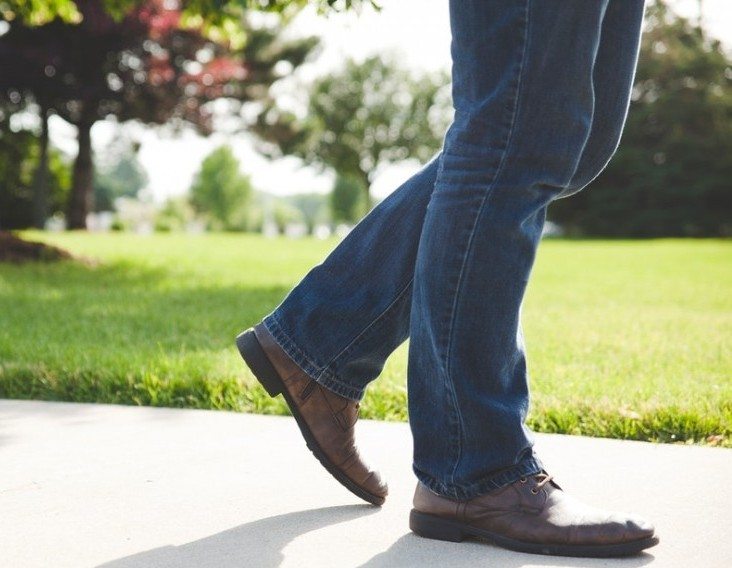
You can engage in exercise if your pain shows to be:
- tolerable
- no severe symptoms
- Numbness, tingling, weakness in your legs and feet
You can proceed to do the most basic exercises on your own. If you are in the early stages of acute pain, you’ll want to begin activity as soon as you can.
What if your Pain is sub-acute?
The best formality is to understand your body. Don’t exercise when your body is hurting since it will cause further inflammation with pain. At this level do the following:
- Book an appointment with your chiropractor
- Visit the doctor for a discussion on recommendations

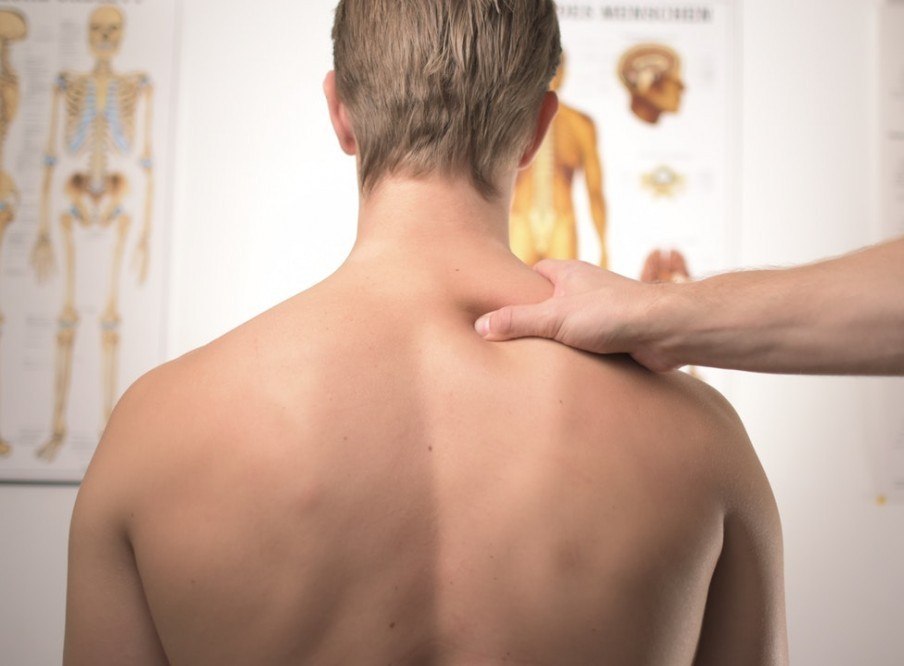
Continue with exercise by doing the following activities:
- walking a shorter distance
- stretch
- flexibility exercises
- stationary bicycles work well
- swim
What about safety?
My ultimate and number 1 concern is your safety. I can teach you how to proceed with exercising, but without your blessings to let me help you, it means I’ve failed myself, and not you.
My friend wouldn’t trust me the very first time, so why should you?But with work after work, he soon gained my trust. And if you believe in that, I say the following:
It is its safe to exercise with sub-acute lower back pain.
In the same way you came through with “acute” lower back pain, you can can apply the same methods with one goal in mind.
To Improve your health!
More often than not, acute back pain is an awareness step. What I mean by that is that even though you don’t need much exercise to better the pain, you do need a plan.
Listen to what your body is spitting back at you. It’s there saying: “Hey, listen to me I’m on your side.”
If today was not the best day to exercise, scale back so you can better manage your pain.
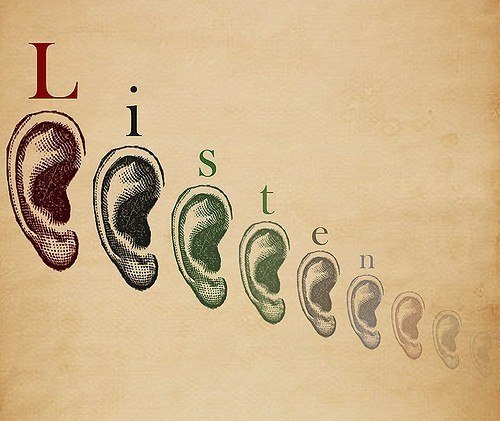
Are you in chronic pain? See below.
There is no doubt about getting exercise. Your muscles need strengthening.
How you go about it is the most important thing. Take action with going to see a doctor or a chiropractor first. Begin an exercise program through them.
With exercise, you want to achieve three outcomes:
- Improving flexibility with strength, and improve your performance in endurance activities.
- exercise to reduce how intense your pain in
- Improving fears, concerns, and your attitude
For Sciatica:

You will most definitely want to exercise if you have sciatica. Without exercise your muscles and spinal structures don’t stay conditioned.
What is most important is to bring good health to your disc. Your movements as little as they are will help keep the disc healthy, and prevents the pressure on your sciatic nerve.
Exercise Done The Right Way
Nearly every morning for a month straight I would roll out of my bed in agony. My pain was debilitating, as much persistent. You could easily predict my routine.
- Wake up to the sounds of my awesome(not) alarm
- Turn to the side of the bed
- I place my feet firmly on the carpet ground
- A hunch on my back
- I would sit there for the next 3 minutes
The work before work started. I really did struggle to head out the gates early mornings. The last thing on my mind was the word “walk”, let alone exercise.
I took a more thorough look at my options. I checked with my doctor. He advised me to begin with light exercises that wouldn’t aggravate my lower L3-L5 disc, and keep my hips loosened up.
That day at work was one of the toughest man. I kid you not. Although my co-workers knew I was in pain, I still somehow, someway pushed through it. I limited my sitting to 10 minutes down, 10 minutes up. My lifting of objects dropped substantially. I couldn’t thank my co-workers enough.
Later this day I went home and began with a couple light exercises. I was off to the right start!
Here is what I did my pain that lasted 2 months:
- Child Pose stretch.
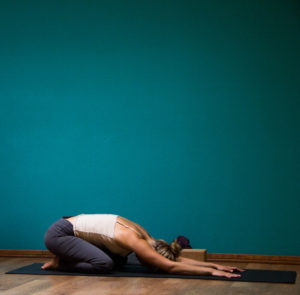
How to do it:
- Grab a mat, or a blanket. Kneel down and sit on your heels if you can.
- Lean your body forward, extending your arms and hands in front of you. Rest your forehead on the floor at this position.
- Hold it for about 1 minute.
What if it hurts?
Move your arms close and cross them over, and rest on your forearms.
- Cow stretch
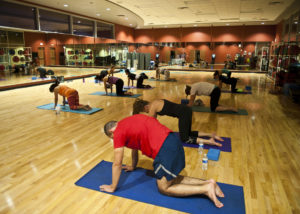
How to do it:
- Get down on all fours with your hands under your shoulders, knees under the hips and your back up to a natural arch, and keep your head in alignment with your spine
- Exhale slowly and bring your back up, keeping your head facing fully to the ground.
- Now reverse the movement
What if it hurts?
Move slowly and reduce your range of motion
- Clam.
How to do it:
- Lie down on the ground. Turn to the left side of your body with your knees being bent at 90 degrees in front of you with your feet on top of one another.
- Keeping everything together, and your hips vertical, lift your right knee up and far as possible from your left.
- Hold it there for 10 seconds, feel it stretch.
- Bring it back down to your left foot, and repeat it 15 times for 10 seconds
- Now lay on your right side and repeat
What if it hurts?
Don’t twist your lower back when you go through the movement.
There are other circumstances that will prevent you from a free-range of motion such as bending, and twisting. These exemplify:
- Degenerative Disc Disease
- Herniated disc
- Osteoporosis
- Sciatic Nerve
- Curvature of the body
I never said it was going to be easy, but the good news is that you don’t have to work yourself to exhaustion. So don’t seat just yet.
This is what you can do right now to improve your quality of life the same way I have been doing for the past 6 years.
- Begin Walking. Chronic Pain can do many things to your back, but It can’t stop your legs from moving. Walking is a very low-impact activity. You already do this at least every day, so you’ve already integrated it.
- You can walk from the parking lot at the grocery store to and from.
- Find a local track, and pace yourself.
- Walking at work, the next break you get take a slow walk.
- Its seasonal, you can do it any time.

2. My personal favorite I like to do is “swimming”. It provides great benefits for muscular issues, and joint pains Like I get. You’re working against gravity when you swim. You don’t feel the aches and shooting pains when you have your back up and aligned in its best supported position.
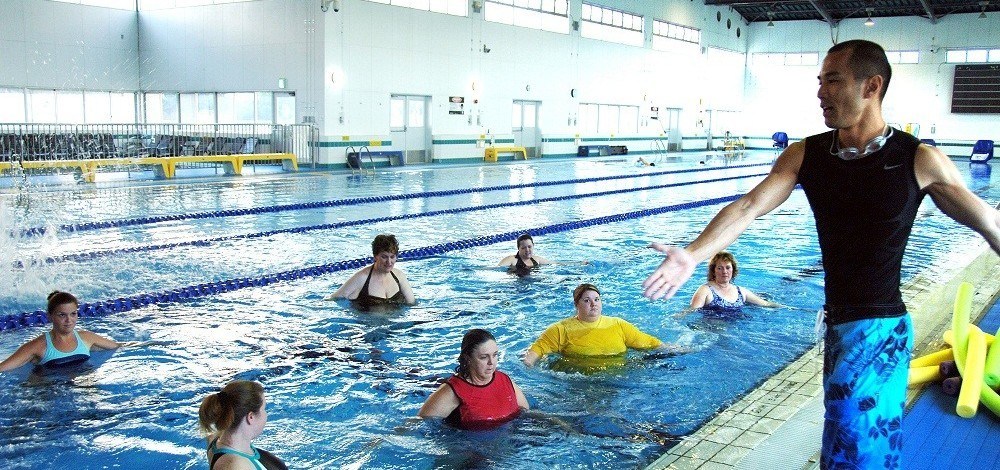
3. Yoga is in. Great for chronic lower back pain, and my most recommended form of healing . I started yoga a couple years back after my soccer game left me out for almost 6 months. You work on the following:
- Breathing
- Stretching
- Movements
Are there risks? Yes. Yoga can involve high ranges of motion. You work your spine in the process and other joints.
What you need to do is figure out what is your “comfort zone”. Feel out which exercises will work the best for your level of pain. When you have had chronic pain for a couple months and you’ve improved your condition then you can mix a variety of positions.
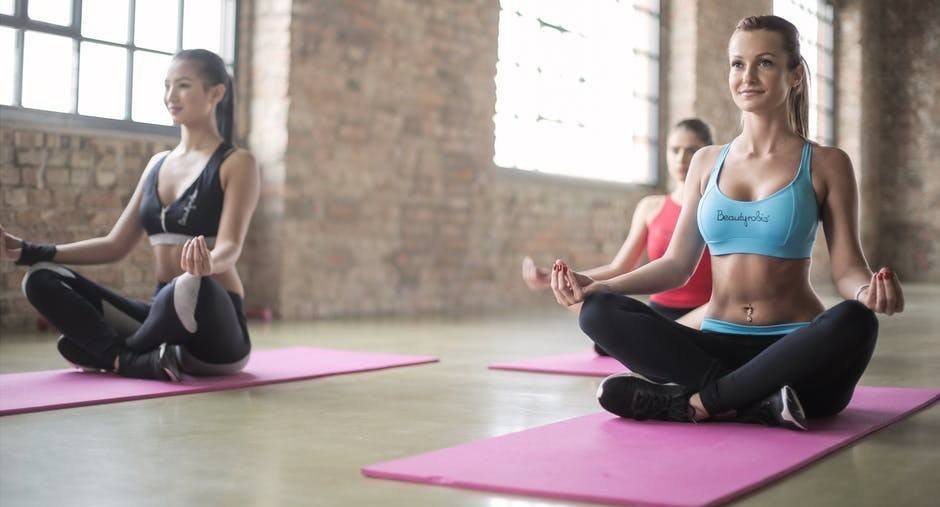
4. Day to day stretching. These are stretches you can do at home while in the bedroom, or standing in line.
But first, do you have Nonspecific chronic pain? If you do, I have a routine that works for me.It will ELIMINATE your pain in just 3 months!
The key is to start with build one aspect of your body before transitioning to the next.
STEP 1. let’s start off with a hamstring stretch.
Benefits:
- Increase the length of your hamstring muscles
- Your hamstrings have a lot to do with the mobility of your pelvic to reduce the tension in your back
How to do:
- Place your right leg on top of a chair.
- Bend your knee just slightly
- Lean forward with your upper body
- Try to touch your toes
- Hold it for 20 seconds
- Repeat 3 times a day
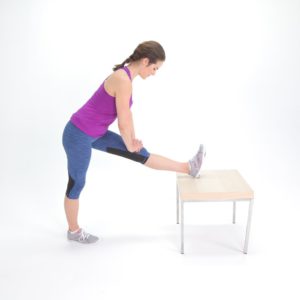
STEP 2. Let’s get into stretching your back now.
Benefits:
- Stretches your hamstrings and lower back
- Loosens up your back
How to do:
- Sit on a plane surface.
- Extend your legs out in front of you
- With Both hands, reach out in front of you, and try to reach your toes.
- Lean forward until you feel a slight pull.
- Hold it for 20 seconds
- Repeat for 3 times a day
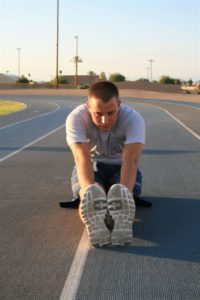
NOTE: The more you do this, the more out Back will become flexible, and you’ll find that you can do it over and over again.
Now that you are much more flexible, let’s focus on your posture.
STEP 3. This next stretch will increase your posture when you are standing. This is great if you’re already flexible.
- Standing up, place your feet shoulder width apart
- Place your hands on your belly
- tuck in your belly
- Slightly lean back into your knees, keeping your feet planted on the ground
- Stretch your chest and head up
NOTE: Within two weeks you will notice that your posture is much better. It took me about 12 days to be able to stand up without feeling back pain. Keep up the hard work! It will pay off!
You’ve now increased your mobility and posture, what’s next?
STEP 4. Keep your back sustained and stable.
Benefits:
- A stable back will not bring back your pain.
How to do:
- Lay on your back
- Bend your knees
- Put your arms crossed over your chest
- Lift your pelvis up
- Hold it for 15 seconds
- Repeat 3 times, 2 times a day
NOTE: You’ll notice that you will feel better moving forward, and lifting will become MUCH EASIER.
STEP 5. In this stretch I want to focus on increasing the strength of your back.
Benefit:
- It will increase your resistance to the forces you will face when stepping.
How to do:
- Lay down on the ground by facing the floor
- Place your arms in front of you and under your head
- Lift your arms along with your upper body
- Make sure your feet are on the ground
- Repeat this 10 times
So there you have it. This is my Physical therapist formula. Stick by it, and abide by it for your “nonspecific chronic pain”. 3 months is all it can take.
I’ve continued the exercises you can do if you have regular constant chronic pain below.
Hamstring stretch:
- Put your heel of one leg on top of a chair
- Tilt your pelvis forward
- Keep your back straight when leaning forward
- Reach with both hands at about 5 inches apart from your toe
- Feel a pull on your leg that’s on the chair
- Hold it for 30 seconds, and switch
Reverse Curl Ups:
- Lye on your back
- Arms extended to your left and right
- Palms down
- At the same time, bend and raise your knees to 90 degrees, feet being off the floor.
- Now bring both knees to your chest, lifting your hips off the floor
- Release, bring them back down
- Repeat
This is great because you don’t want to give your muscles the chance to get comfortable to one side of your bide. That will make it harder for you to unlock your movements.
5. Strength training exercises. We want to work around the back muscle, not through them. Start with this lightweight exercise
Lateral Raise:
- Grab a pair of dumbbells, lightweight preferred
- Hold them in front of you, elbows bent slightly
- Raise your arms up and out at the same time until they are at your shoulder height
- Hold it there
- Return to starting position
- Repeat
The Squat.
-If you can go up and down, over time you will be able to go up a flight of stairs.
- No weights
- Begin with placing your two feet about 4 inches with apart.
- Back straight, chin and face level with your shoulder
- Bring your body down bending your knees, let gravity easily pull you down
- Go down until you can feel comfortable
- Arms extended in front of you
- Slowly bring your body up, and all the way
- Repeat for a total of 3 reps
6. Aerobic exercises.
Treadmill. A treadmill is a good substitute for not being able to walk outside. Sometime my introverted personality kicks in and I’d rather be at home on my machine. Make sure you keep your straight up and suck in your stomach. Start slow. When you feel pain, stop immediately. I believe you’ll find this video on how your treadmill rhythm going:
The elliptical. Much like the treadmill follow the same guideline of keeping your straight up, and begin to move slowly. If you feel pain, step off the machine.
I checked in with my doctor. What he told me next was obvious, but to my competitive nature it didn’t make sense.new stretches out, and to combine my exercise accordingly and structured.
I was advised to slow down my intensity, and to begin low. All the soccer I played would need to be put on pause for about a month and a half.
When it comes to exercising, there are many exercises that are going to make you feel good, but just because they do it doesn’t mean they are the best for you. Depending on the type of injury you have, you’all have to go about your exercising more accordingly.
If your pain is keeping you from getting up you should:
1. Rest for a couple days
If you can stand up and walk around you should:
2. Attempt to start exercising
The athlete in you:
Are you trying to get back into action? Focus on a combination of ab stretching and working the hips.
- Planks:
How to do it:
- Place yourself in the push up position
- Bend your elbows to rest your weight on the forearms
- At this point your body should be as straight as a line
- Hold this position for at least a minute
- Come down.
- Switch sides
- Repeat
- Cobra
How to do it:
- Lie facedown on the surface of the ground
- Place your legs straight, right behind you
- Place your arms straight down, and next to your sides
- Your palms down
- Squeeze your butt muscle
- Raise your head, chest, arms, and legs off the floor
- Now rotate your arms, having your thumbs facing the ceiling
- Hold for 30 seconds
- Relax for 5 seconds
- Repeat for 3 more reps
Do You Have Sciatica?
In a moment I’m going to reveal the best exercises for sciatica nerve among the various stretches to put yourself in control, but this first…
Sciatica pain needs to be treated more carefully. It needs to be controlled. The goal is to re-condition you so that you prevent further flare-ups in your future.
Start with these stretches:
- Reclining Pigeon Pose
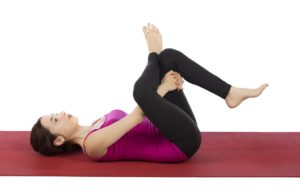
This will open up your hips.
How to do it:
- Lay down on your back
- Bring your right leg upward to a right angle.
- Place both of your hands behind your thigh
- Lock in your fingers
- Lift your left leg
- Place your right ankle on top of your left knee
- Stretch that Pifimoris muscle
- Switch legs
There are more versions of the pigeon pose that require you to sit down instead. You’ll want to talk with your Physical therapist and see what more you can do at that point. But if you are ready you can do these:
- Forward Pigeon Pose
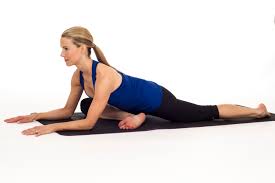
How to do it:
- On all fours, kneel down.
- You’ll pick up your right leg and move it forwards in front of your body, and on the ground
- Your lower leg is on the ground
- Make sure your left leg is stretched out all the way back on the ground
- Breathe in, and lean foreward over your front leg.
- Let your arms be your support
- Repeat for your other side
- Knee to Opposite shoulder
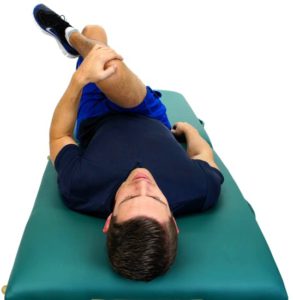
-The goal here is to relive your pain by targeting your butt and the piformis muscle.
How to do it:
- Lie down on your back
- Extend your legs.
- Feet pointing up.
- Move your arms to the front of your knee and gran them, locking in your fingers
- Slowly bring your right leg to you and towards your shoulder.
- Hold it for 30 seconds at a comfortable level
- Feel the stretch
- Repeat with 3 reps
- Switch legs and repeat the process
- Hamstring stretch:
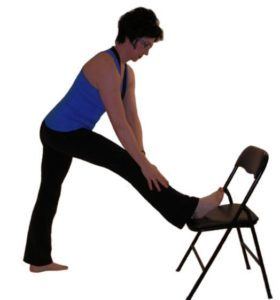
How to do it:
- Put your heel of one leg on top of a chair
- Tilt your pelvis forward.
- Keep your back straight when leaning forward
- Reach with both hands at about 5 inches apart from your toe.
- Feel a pull on your leg that’s on the chair.
- Hold it for 30 seconds, and switch.
What if your pain was nonspecific?
You could have a backward motion known as Posterior pelvic tilt, or a forward motion in Anterior Pelvic Tilt
When your pelvis disrupts your mobility there are certain exercises you must get into:
For posterior mixed with some anterior, you should follow these stretches one after another for maximum results:
- Leg Lunges
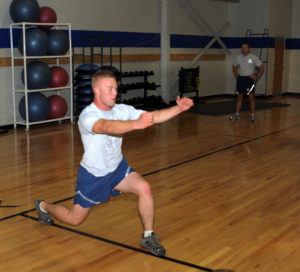
It builds up your:
- hamstrings
- butt(glutes)
- quadriceps
How to do:
- Stand up on a plane surface
- Keep your feet together
- Place your leg leg out in front of you
- Bend your left leg to a 90 degree angle.
- Your other knee needs to be touching the floor, while the other leg is kept at 90 degrees
- Change legs
- Repeat for 3 sets, 10-12 lunges
Beware: You may not be able to bend your knees from bad knees. Skip this if you can’t.
2. The Static Hamstring Stretch

It builds up your:
- leg strength by reducing stiffness
How to do:
- Find a chair without a cushion to sit on
- Stretch out your left leg in front of you
- Bend down, reach for your toes till a light pull
- Hold for 20 seconds
- Switch legs and repeat
Beware: If you go down too far it can further pull on your muscle, and cause more injury.
3. Superman

It builds up your:
- lower back by strengthening
- gluteus maximus
How to do:
- Lie on a plane surface, with your stomach facing the ground
- Place your arms out in front of you
- lift up your chest and hold it for 30 seconds.
- Come back down
- Repeat it for 3 sets
Now that I covered posterior pelvic tilt, lets get onto anterior pelvic tilt:
There is ONE specific anterior pelvic tilt exercise that provides me with the most relief. I want to share it with you right now.
- The Squat

“Tilt your pelvis in the opposite direction”
This does two things:
- Takes pressure off your facet joints
- Opens up your hips
How to do:
- Without weights, lower your body to the very bottom
- Relax there
- rest your arms in front
- tuck your knees in
- legs tucked in
- Hold it for a minute
- Now come up
This can be a little more advanced because you are lowering your body to the round more, and holding it for a minute.
Otherwise try this:
The Half kneeling Hip Flexor stretch
This stretch builds up your:
- hip flexors
- increases hip flexibility
How to do:
- Start on a plane surface
- Put your leg out in front of you
- Lunge until your left knee is rested on the ground
- Use a towel under your knee if uncomfortable
- Your right leg needs to be a t a 90 degree angle
- Now bring your pelvis forward, tightening your butt, and abdominal muscles
- Go until you feel tension in your hip(hip flexor)
- Hold or 30 seconds
- Repeat 5 times
- Switch your legs
Bridge:
Builds up your:
- hamstrings
- and gluteus muscles
How to do:
- Lie on the floor flat, with your back to it
- Bend your legs in
- Keeps your hips width apart
- Arms by your sides
- Now push your heels onto the floor, and lift up your pelvis until you are in a straight line
- Hold it for 3 seconds
- Come back down
- Repeat this at least 5-10 times
Sciatica Stretch With The Use of A Tennis Ball
Back pain and sciatica usually go hand-in-hand and if they are not cared for together with all the exercises you just witnessed up above, it can disrupt anything you try to do in your precious life.
We only have so much time on this plant called Earth, and it’s better to live it pain free and get things done the first time around than to have to wait years before we wake up. With that being said…
Let’s get that mind numbing pinched nerve off your back and off for good!
Using a tennis ball is no secret these days, and it’s a huge hit thanks to the fact that it can:
- Precisely with pin point accuracy untie knots in smaller to reach areas.
- A tennis ball is a great substitute for a regular massage because unlike conventional massages that reach larger tissue areas of your back, a tennis ball goes right to the actual knots
Another term that thistype of massaging is known as is called Myofascial Release.
How is a tennis ball so effective you might ask?
A Tennis ball integrates the benefits of a massage, acupressure, and reflexology. When you place the tennis ball on a certain part of your body whether that be your lower back or elsewhere, you are doing two things:
- Relieving muscle tension
- Relieving soreness
And even better, the tennis ball will focus more on your pirifimoris muscle which is the closest muscle to your sciatic nerve.
The best way for me to explain this type of exercise and massage is like getting a shoulder or neck massage…
At first you’ll feel a pinch and a tight squeeze that makes you cringe and jump, but it just feels so good. By the time you are done, you walk out of your session like you had shoulder and a neck replacement.
Here’s how to do a sciatic nerve stretch with a tennis ball step-b-step:
- Lie down on your back. With a tennis ball in your hand, place it underneath your glutes(butt).
- Relax your muscles and then run up and down your body into the ball, applying firm pressure.
- Hold this position from 30-60 seconds. Increase time by 5 seconds if you can’t make the full 60 from the start.
What’s The Outcome?
Overall, what’s happening is that you are reducing muscle tension, improving on muscle soreness, while improving upon your mobility and blood circulation to this area of your pain.
Whether you have acute, sub-acute, chronic, or sciatica nerve pain, there are ways that exercising will make you not only feel well, but make you a “mechanically” well oiled machine

Stay Active and You WILL Strengthen
The thought of exercising might not excite you, but it will make you mentally stronger. You’ll think that it is better for you to grab the closest back supporter and take a rest, when quite actually this can only worsen the pain. There are numerous accounts as to why you don’t exercise, and its not because of the threshold of your pain but because you’re not being re-active.
Good Ol Jolly, there is so much temptation to just sit down and grab a bite. This is not the solution. It will only create a distance between you exercise and getting better right away. By changing your habits to best suite your exercising needs, you’ll be able to perform therm much easier.
You know that sitting will only cause your pain to worsen. Exercising can be right for you at any level of injury. The factor is what exercises you should be doing to improve yourself.
There are both good and bad exercises for your pain, and I’ve given you the best things you can do for your pain threshold.
I hope you have enjoyed my article. If you have any questions, concerns, suggestions, or an opinion, leave me a comment below, I would like to hear about it. I’ll get back to you right away!
The Remove Back Pain System
The next part of the Remove Back Pain System will take you into understanding your pelvis and nerve pain a little more. Your pelvis has a large part to do with your sciatica.
Continue with the pelvis and sciatica article here.


I’ve been experiencing lower back pain lately and I must say this is the first guide I’ve come across that includes so much detail! I love the fact that walking is a low-impact activity and even I’ve been lacking in this department. I’ve been lifting weights but in all honesty I think it’s doing more harm than good. I’ll start from the bottom and work my way up. Thanks for all your help!
Hi Brandon,
I want a full depth analysis. I want to share my extensive knowledge and experiences at the most I can. Right? Walking at its empirical form can be made so easy for anyone. Exclude the lifting for the moment and like you said start lower on that totem pole. You’ll take off and realize you can get into weights in no time, seriously lol. I was the same way a couple years back, I feel it. You’re welcome. Take it easy!
Hi Michael, I’m so impressed with all the information that you have provided in respect to back problems and how to manage them correctly. I was particularly interested in what you had to say about nutrition and the spine. I read an article awhile ago that informed about the positive influence that drinking water has on the spine as well. It was an excellent idea to include some videos to demonstrate the actual exercises.
All the best,
Brian
Hello Brian,
I think people have the exposure, but proper management is the key to it all. Yeah, nutrition is like a refurbishment to the spine, as it helps the disc. Good to hear you have that information handy, it’ll go a long ways. I keep a “smart water” bottle at my house and fill it up for reuse all the time, 1 liter of it. It does the job. Well thank you! I hope you enjoyed the article.
MIchael –
I commend you for endorsing mobility to heal back strains. I can imagine what you went through to regain your muscle strength, as you wake up in the morning to get those back exercises done. But we really have to look beyond the pain but the future..that if we don’t work through the pain through exercise, we will be more debilitated.
I have chronic lower back pains myself which I have learned to live with. I wear a back brace for support if I know I will be doing strenuous activities. I will check out yoga as you suggested. Thanks for your post.
Gigi
Hi Gigi,
Mobility has to be recognized. My pain was a major concern, Imagine a lost puppy, that’s how I felt to start. I’m glad the right people entered my life to help, and gave me my options. Yes we do! Great thinking Gigi. Exercise gets overlooked, and people ask themselves why they are more stiff the next day.It’s just natural for your muscles to get used to one position. I hear you, chronic lower back doesn’t have to be an end point, its just the beginning of a new transformation, that’s How I come to think about it. Sounds great, give it a look. If you want to learn more what I do for yoga can I suggest one thing?
Have you heard of Vinyoga therapy? It’s my favorite go to yoga. You can check it out if you ever feel a need to. Or just ask me and I’ll further your help. You’re welcome.
Your article is very informative. I suffer from upper and lower back pain. Having a combination of videos and narratives really help a lot. I know when I ‘m in pain, exercise is the last thing I want to do. When I can get the pain under control, I will definitely like to start exercising again. Thanks for the information!!!
Hi Arlene and George,
I wanted to make it aware to people that there is not only one type of exercise that works best for everyone, but that doing multiple exercises are the key to releasing your whole body to work around the pain, and not through it. Oh do you? Back pain is starting to creep up on me as of lately. I’m getting muscle spasms at night before bed! Yikes. I know right? It seems like its the last thing to do. What helps me I guess, is my background in sports. It gets me up my butt no matter what. Practice makes perfect, you can do it. Start with one targeted exorcise at a time. You’re welcome!
Sounds like you’ve learned a lot from your painful experiences. What a huge amount of information you have on your site! I’ve bookmarked it so I can visit in the future. Sitting at computers or in city traffic can cause anybody, at any age, to experience back pain or decreased mobility. Your site is packed with a lot of good exercises and suggestions for short- and long-term back health. Thank you!
Hi Colleen.
You can say that again, I most definitely have learned, and learned from my lessons. I wanted to make sure I fit in my experiences, and best information that I recevied with chiropractors, PT’s, Doctors, and my coaches. Indeed! I couldn’t agree any more. Sitting in a car can be far worse because the seat doesn’t move left and right, allowing you to shift your movement in a stationary spot. I’ve had back ache after back ache from driving late back home from a night shift, Oregon to Washington. I’m glad you found my information useful. No, thank you:)
I have been suffering from lumbar stenosis to the point where surgery seemed like the only option. So I read your post looking for exercise ideas that would work for me.
You provided many options.
I like the videos you provided for the exercises and for using the machines.
Thank you.
Hi Monique,
The narrowing of the spine is an unfortunate thing to have to happen. It really got to that point? Spinal stenosis really can put extensive pressure to the nerves. I wanted to make sure I put emphasis on how to relieve your nerve pain, while keeping your back in proper positioning. You are welcome!
Great Post, and really eye opening man! I really like the fact that you cover the exercises for both lower back pain and sciatica in one page, and the value that doing both exercises have. I noticed that you adding swimming and walking, which one do you think would be best for someone with constant joint pain and who can’t handle walking for a couple minutes?
Hi Saul,
Oh yeah was it? Nice! I’m glad you appreciate that, I really wanted to store two conditions into one article, as I felt it was the best way to get my information across without doing much flipping and looking from page to page. There are slight differences between just exercising with Lower back pain or Sciatica Alone, So addressing the two under one article is critical. For someone with constant joint pain and aches, I would immediately say to check out the water exercises. Swimming will help reduce the pressure on your spine, and you will not have trouble walking and exercising in the water. Make sure to follow that link I have above so you ensure you’re doing the right ones. Please let me know if you have any more questions or concerns that I can help you with. -Michael